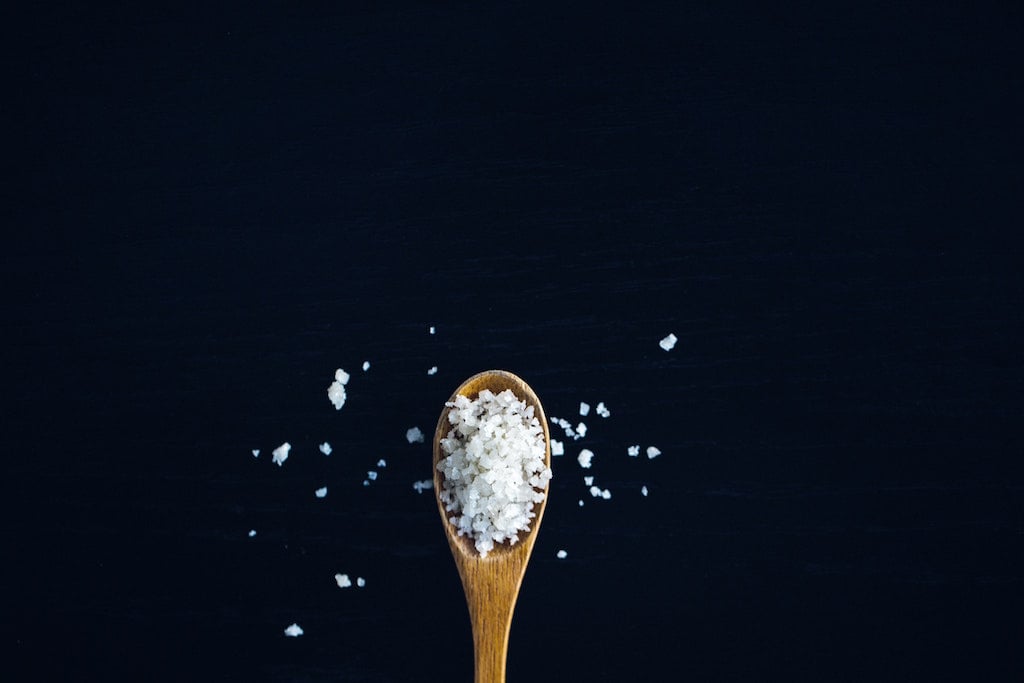By Meghan O'Neal
03/30/2020

Those who have been pierced before should be well aware of the practice of sea salt soaks. For those who haven’t been pierced, the concept is simple: per your piercer’s instructions, mix together distilled water and non-iodized salt, and soak your piercing in the mixture for 3 – 5 minutes. Voila! Your piercing is clean.
What might not be clear is why this works. How is a simple mixture of salt and water better than cleaning your piercing with soap and water? How can salt possibly clear your piercing of bacteria?
We’re here to clear things up. Here’s a simple guide to saline solution and saltwater.
To clarify things, saline solution (which is what any over-the-counter aftercare cleaning product is made of) consists of only sterilized water and sodium chloride (AKA salt). It’s essentially the same thing that you make at home should you choose to create your own aftercare solution. The main differences between the over-the-counter aftercare spray and a DIY aftercare solution are 1) the purchased solution will always be the correct ratio of salt and water, 2) it comes in a sterile container, 3) it usually has some sort of spray nozzle.

So, how exactly does a simple mixture of salt and water clean your piercing?
Without going too deep into the science behind it, the answer is pretty straightforward: the salt dries up the bacteria, which kills it. And, that’s about it. Since it’s a simple mixture of salt and water, saline solution is safe for everyone, and as long as you get the mixture correct, it won’t irritate your skin, making it the ideal solution to piercing aftercare.
As your piercing heals, the inside of your piercing needs to form a tunnel, called a fistula. That healing tunnel can easily trap dirt, debris, and dead skin cells inside, leading to pustules or other complications.
A sea salt bath will flush the fistula of this debris, lowering your risk of infection. It will also help minimize buildup that could slow down healing. Beyond killing bacteria on or in your piercing, flushing out the piercing helps prevent piercing bumps, pustules, and other complications.
Yes, it does. When making your own saline solution, you should stir ¼ teaspoon of salt into one cup of water until fully dissolved (or an equivalent ratio).

If you notice that your skin becomes irritated, then it means that you’re using too much salt. If your piercing isn’t getting fully cleaned, it means that you aren’t using enough salt. It’s a delicate balance that you need to pay attention to. When in doubt, invest in a piercing aftercare product.
Absolutely. Saltwater works to dry out bacteria, which kills them, but it can dry out your skin as well. You should clean your piercing no more than three times a day with a saline solution mixture. If your piercing gets dirty or exposed to some sort of debris in between sea salt soaks, you can clean purified water to avoid skin irritation. Stay away from products like antibacterial soap, which contain chemicals that can cause issues.
If you’re cleaning your piercing three times a day, and it starts to get irritated, consider limiting your cleanings to two times a day. As always, when in doubt, please see a piercing professional.
The safest choice for your piercing is to only use your saline solution mixture on your piercing. Most other products could cause skin irritation and other issues.
Tea tree oil is one product that’s a source of controversy among piercers. Some say that it’s okay to use, and some recommend against it. In this case, defer to the opinion of your piercer (as long as you’ve found a reputable one). This goes for any non-aftercare product that you’re thinking about using on your piercing as well.
Saline solution might seem like it’s a simple product, but it does a lot for your body. There’s a reason why people use saline solution for a large number of things, from piercing aftercare to cleaning a wound to nasal irrigation and disinfecting contacts. Since it’s made up of salt and water—ingredients that are found naturally in the body—it works with your immune system to keep your body free from bacteria and other debris.
As you commit to aftercare for your healing piercing, never underestimate the power of saline solution; if used correctly, chances are that it’s the only product that you’ll need to ensure successful healing.
The best way to stay on top of your aftercare practices is to dream about all of the jewelry that you can wear once your piercing is fully healed. Take care of that piercing so that you can invest in some adorable body jewelry pieces like these.
Leave A Comment